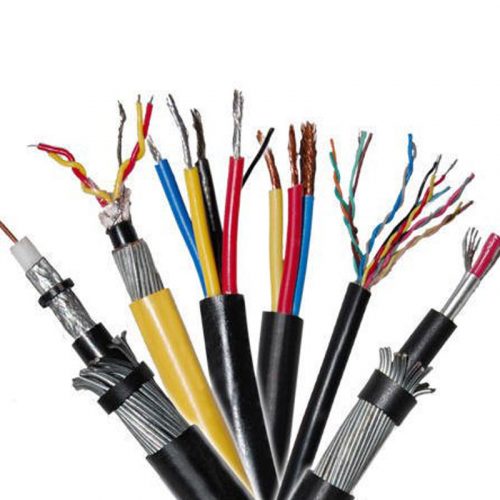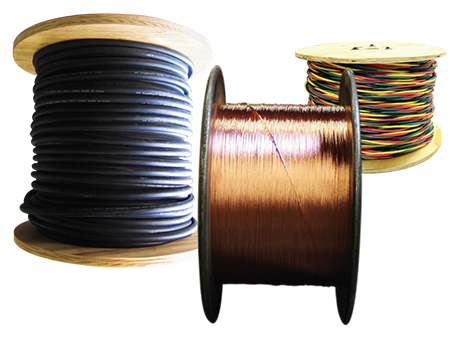
The most common type of electric power cable is that which is suspended overhead between poles or steel towers. These aerial cables consist of a number of wires, usually of copper or aluminum, twisted (stranded) together in concentric layers. Copper or aluminum is chosen for high electrical conductivity, while stranding gives the cable flexibility. Because aerial cables are frequently subjected to severe environmental stresses, alloys of copper or aluminum are sometimes used to increase the mechanical strength of the cable, although at some detriment to its electrical conductivity.

A more common design is to include in the stranded cable assembly a number of high-strength, noncorrosive steel wires. Many aerial cables, especially those operating at high voltages, are bare (uninsulated). Cables operating at lower voltages frequently have coverings of asphalt-saturated cotton braid, polyethylene, or other dielectric (nonconducting) material.
These coverings offer some protection against short-circuiting and accidental electric shock.
Another type of electric power cable is installed in underground ducts and is extensively used in cities where lack of space or considerations of safety preclude the use of overhead lines. Unlike an aerial cable, a buried cable invariably uses commercially pure copper or aluminum (mechanical strength is not a problem underground), and the stranded conductor is frequently rolled to maximize its compactness and electrical conductance.

Electric cables used to transmit information are quite different from power cables, both in function and in design. Power cables are designed for high voltages and high current loads, whereas both voltage and current in a communication cable are small. Power cables operate on direct current or low-frequency alternating current, while communication cables operate at higher frequencies. A power cable usually has not more than three conductors, each of which may be 1 inch (2.5 cm) or more in diameter; a telephone cable may have several thousand conductors, the diameter of each being less than 0.05 inch (0.125 cm).
Protective coverings for electric communication cables are similar to those for electric power cables. They usually consist of an aluminum or lead-alloy tube or of a combination of metallic strips and thermoplastic materials. The insulation of a telephone cable is composed of dry cellulose (in the form of paper tape wrapped around the conductor or paper pulp applied to the conductor) or of polyethylene.